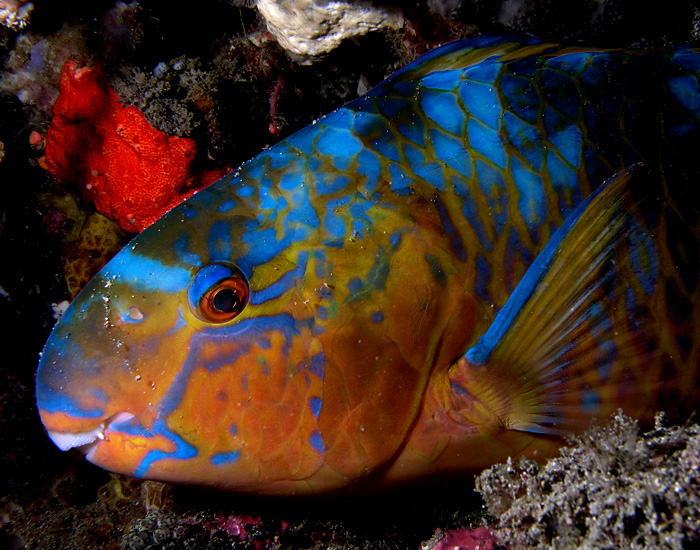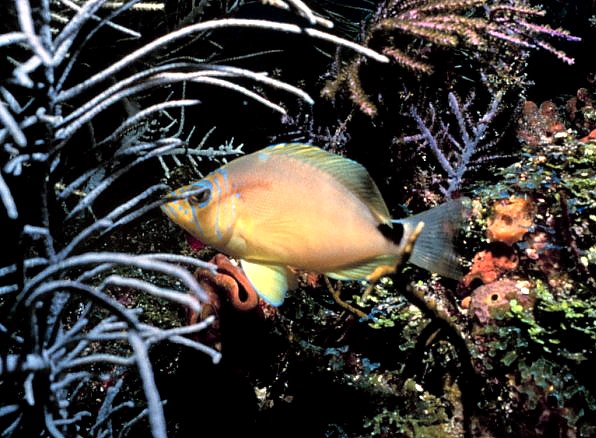 Hello, Frank Indiviglio here. Marine aquarists and divers are well-aware of the mucous “sleeping bags” produced by Parrotfishes and certain Wrasses each night. It was assumed that these cocoon-like structures discouraged eels, crabs and other nocturnal predators – perhaps the mucous hid the sleeper’s scent, or was bad-tasting or toxic. A study at Australia’s Queensland University, however, has revealed that the mucous cocoon’s main purpose may be to deter external blood-sucking parasites – the first known example of such a phenomenon.
Hello, Frank Indiviglio here. Marine aquarists and divers are well-aware of the mucous “sleeping bags” produced by Parrotfishes and certain Wrasses each night. It was assumed that these cocoon-like structures discouraged eels, crabs and other nocturnal predators – perhaps the mucous hid the sleeper’s scent, or was bad-tasting or toxic. A study at Australia’s Queensland University, however, has revealed that the mucous cocoon’s main purpose may be to deter external blood-sucking parasites – the first known example of such a phenomenon.
A Good Reason to Hide
Writing in the November 17, 2010 issue of the journal Royal Society Biology Letters, researchers have established that sleeping Parrotfishes suffer numerous parasite attacks when deprived of their mucous cocoons (I couldn’t determine how they removed the cocoons without waking the fish!). Parrotfishes with intact cocoons sleep peacefully through the night, and were rarely bitten. Read More »
 That Fish Blog – Aquarium Advice and Information
That Fish Blog – Aquarium Advice and Information



